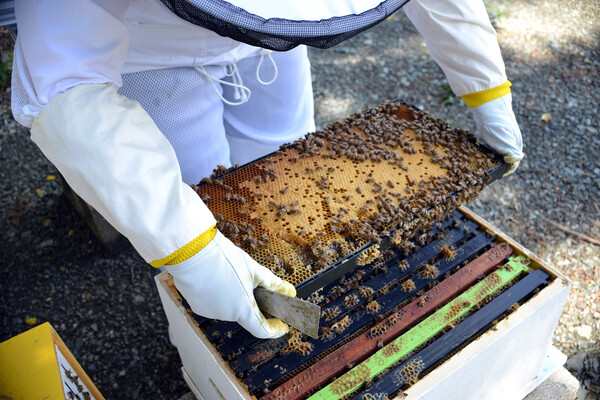
Image: Kindamorphic via Getty Images
Breast cancer mortality rates have steadily declined over the past few decades, thanks to a combination of early detection and improved treatments. But for patients diagnosed with triple-negative breast cancer (TNBC), a subtype in which tumor cells lack receptors for estrogen, progesterone, and Her2, no targeted treatments are available. Triple-negative breast cancers are also more likely to metastasize than other subtypes.
Hoping to find new targets for this disease, a team led by the School of Veterinary Medicine’s Manti Guha, a research assistant professor, compared features of triple-negative breast cancers to other tumor types. Her findings revealed unique patterns of defects in the tumor cells’ mitochondria—the powerhouse of the cell—in triple-negative breast cancers. These signatures could be used to more accurately assess risk and develop personalized treatment. Eventually, these defects could offer targets for specialized therapies against these aggressive cancers.
“Currently, there is no molecular diagnostic to identify which TNBC patients might be poor responders to available chemotherapies,” says Guha. “By identifying unique mitochondrial defects and alterations in metabolic gene expression in the most aggressive subset of tumors, this study provides new molecular biomarkers that could identify the aggressive subset of TNBCs and, more importantly, offer these patients promising options for treatment.”
Mitochondrial dysfunction has been a focus for Guha and colleagues, who have linked it previously to breast cancer metastasis. In the current study, the researchers wanted to see if triple-negative cancers had distinct patterns to their mitochondrial DNA or function that could distinguish them from other cancers.
Using tissue samples from patients with different breast cancer subtypes, defined cancer lines, and previously collected genomic data representing 825 breast cancer patients, the researchers found that patients who had more advanced disease were more likely to have the lowest copy numbers of mitochondrial DNA (mtDNA). Triple-negative cancer patients had the most reduced copy numbers. Additional screening revealed an imbalance in a particular sequence of mtDNA that was prevalent in triple-negative tumors, but not other breast tumor subtypes.
“This particular mtDNA sequence imbalance is fairly unique, and has not been reported in cancers,” Guha says. “This could potentially be used to stratify patients into different risk categories.”
In a broad screen of 84 genes related to metabolism, a process that mitochondria regulate, the researchers found clear patterns that characterized triple-negative tumors from other breast tumor subtypes. These genes could serve as potential therapeutic targets for intervention, or as biomarkers to identify breast tumors that are more likely to metastasize, the researchers noted.
Next up for the scientists: seeing if therapies already on the market—perhaps in combination with one another—may effectively target the metabolic irregularities present in triple-negative breast cancers.
Katherine Unger Baillie

Image: Kindamorphic via Getty Images

nocred

nocred

(From left) Kevin B. Mahoney, chief executive officer of the University of Pennsylvania Health System; Penn President J. Larry Jameson; Jonathan A. Epstein, dean of the Perelman School of Medicine (PSOM); and E. Michael Ostap, senior vice dean and chief scientific officer at PSOM, at the ribbon cutting at 3600 Civic Center Boulevard.
nocred